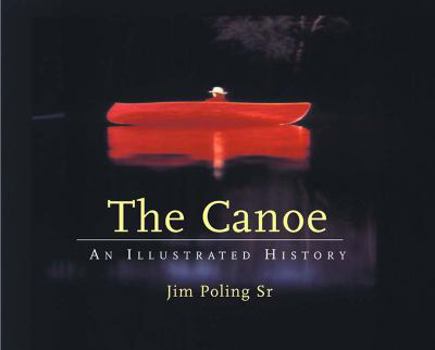The Canoe: An Illustrated History
Select Format
Select Condition 
Book Overview
There is hardly a river or lake in North America that was not first seen from the gunwale of a canoe. Centuries before the invention of the train and the motorboat, canoes were used for exploration, trade, war, and the hunt. Indians crafted canoes out of dugout logs, birch bark, and animal hides; French colonists employed courier canoes; and the Spanish explorers brought cane and woodcrafts with them to new lands. The canoe has brought together Native...
Format:Hardcover
Language:English
ISBN:088150503X
ISBN13:9780881505030
Release Date:April 2001
Publisher:Countryman Press
Length:144 Pages
Weight:1.73 lbs.
Dimensions:0.7" x 10.3" x 8.3"
Customer Reviews
1 rating
History, craft, wonderful illustrations - and much more
Published by Thriftbooks.com User , 23 years ago
This is a beautifully illustrated book supported by a text that is informative, well-organized - and wholly satisfying. The many photographs, engravings, historic and relevant photographs, beautiful paintings, and good nature photography - are first-rate. Jim Poling, Sr. begins at the beginning with "The First Canoeists." Christopher Columbus writes of his astonishment at seeing canoes in action: "They are not so wide because they are made of a single log of timber, but a galley could not keep up with them in rowing for their motion is a thing beyond belief." Pacific Coast canoes were made of cedar; northern inland canoes, of bark ( most often elm, hickory, spruce, and cedar). The "perfect material," birch, plentiful and remarkable, was used in the canoes of what would become the Canadian Maritime Provinces, northern New England, and Quebec, Ontario, Wisconsin, and Minnesota. In addition birch (or its bark) provided the material of choice for Indians' toboggans, snowshoes, utensils, children's toys - plus winter covers for wigwams, food wrapping, animal calls, arrows and quivers, among other things. Finally, there were skin canoes.Poling describes the building of the various types of canoes. The initial contact between Europeans and the indigenous people of the North American continent is the focus of the second chapter. The canoe enabled access to inlands - and the ensuing frenzy of fur trading - that would otherwise have been impossible to accomplish on anything but waterways. Poling describes in good detail various components of historic canoe culture among the sixteenth and seventeenth century European settlers, paying close attention to the New France coureurs de bois - " runners of the woods." These were physically sturdy young men employed to fan out into the deep north woods, make contact with Indians, and facilitate the fur trade. But once set free, these fellows almost to a man dropped out of the repressive seventeenth-century French culture they had known. They embraced the woods and the physically taxing but otherwise rather freewheeling nonChristian life to be lived there - to the utter dismay of the colonists back at the settlements. The coureurs comprised "a distinct social class in the new land [...] neither liked nor accepted by the establishment [...] disrespectful of authority, irreverent, and violent..." Their occasional temporary re-entry into the precarious settlements was always problematic. They openly patronized prostitutes and rejected conventional European customs and manners. The problem became so severe that "the matter was brought to Louis XIV, who issued a 1681 decree limiting the number of coureurs du bois. Those who ignored it were branded with the fleur-de-lis, the symbol of France, and third offenders got life on the galley ships." Poling adds: "The decree didn't work."The beaver - mainstay of indigenous culture - is given good treatment in this book, and interesting tidbits are supplied - such





